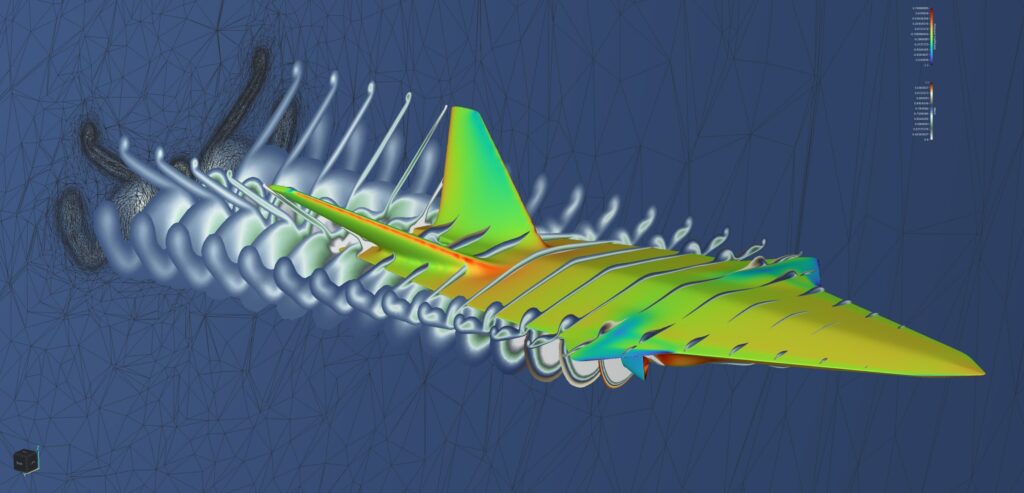
An nTop aircraft simulation in Luminary Cloud. (Image: nTop/Luminary Cloud via PRNewswire)
SAN MATEO, Calif.—Luminary Cloud and nTop recently announced a new integration with NVIDIA PhysicsNeMo that is said to reduce physics-based AI design optimization from weeks or months to hours.
The integration is said to smoothly connect nTop’s parametric geometry generation, Luminary’s GPU-native simulation and simulation management platform, and NVIDIA PhysicsNeMo via NIM microservices. Engineers can now create and analyze hundreds of design variations in a single day—a process that previously took weeks to months of manual effort across disconnected systems, according to a release from Luminary Cloud.
“Physics AI has reached a pivotal inflection point with the integration of Luminary Cloud and nTop, eliminating major barriers to widespread adoption,” the release stated. “This breakthrough creates the first automated pipeline for physics AI-driven engineering design optimization.”
Engineering teams have long relied on computational simulation to validate designs before physical prototyping. However, truly optimizing products requires exploring thousands of design variations—a process that was prohibitively time-consuming until now, according to Luminary Cloud.
The new integrated solution is reported to combine three critical technologies. First, nTop’s parametric geometry engine generates complex design variations in seconds. Then Luminary Cloud’s GPU-native platform runs hundreds of high-fidelity simulations quickly and in parallel. Finally, NVIDIA’s PhysicsNeMo AI physics framework uses the data to create predictive models. The result is described as “a seamless workflow that compresses what once took weeks into hours.”
“The use of cloud-native platforms and modern APIs from nTop and Luminary enable the generation of ensembles of simulations and vast amounts of data that are easy to curate, store, and consume for physics AI model training in less than a day,” said Juan J. Alonso, CTO and co-founder of Luminary Cloud, in a statement. “Without the ability to seamlessly manage the data we rely on, even the most sophisticated companies today are unable to deploy Physics AI models as quickly as required.”
“The integration of accelerated computing with nTop’s design software and Luminary Cloud’s CAE platform will enable a seismic shift in how products are developed,” said Tim Costa, senior director for CAE EDA and Quantum at NVIDIA, in the release. “This combination will accelerate product development and help set new benchmarks in the industry.”
According to the release, engineers can now define design parameters, automatically generate and simulate hundreds of variations, and leverage AI to predict optimal configurations. They can do all of this in an integrated workflow without manual file transfers or specialized expertise. The system is said to show potential for dramatic performance improvements across aerospace, automotive, and consumer product applications. The first joint demonstration between nTop and Luminary, in particular, shows the optimization of lift and drag characteristics of flying wing configurations.
This collaboration marks Luminary’s first native, API-based integration with a geometry engine to ingest and simulate many design iterations. It is said to represent a fundamental shift in the development of AI models for design optimization, democratizing both access to Physics AI for engineering teams of all sizes and the way simulation-based design is conducted.
“Physics simulation has long been a critical bottleneck in real-time design optimization,” said Brad Rothenberg, CEO and founder of nTop, in the release. “The integration between Luminary and nTop, powered by NVIDIA hardware, brings us significantly closer to solving this challenge. Through Luminary’s API, we can seamlessly push nTop geometries to Luminary for physics calculations and automatically return results to nTop in a robust, continuous loop. This makes it now possible, and actually easy, to train up physics-based AI models used to accelerate performance predictions. We’re now closer than ever to real-time design optimization.”
